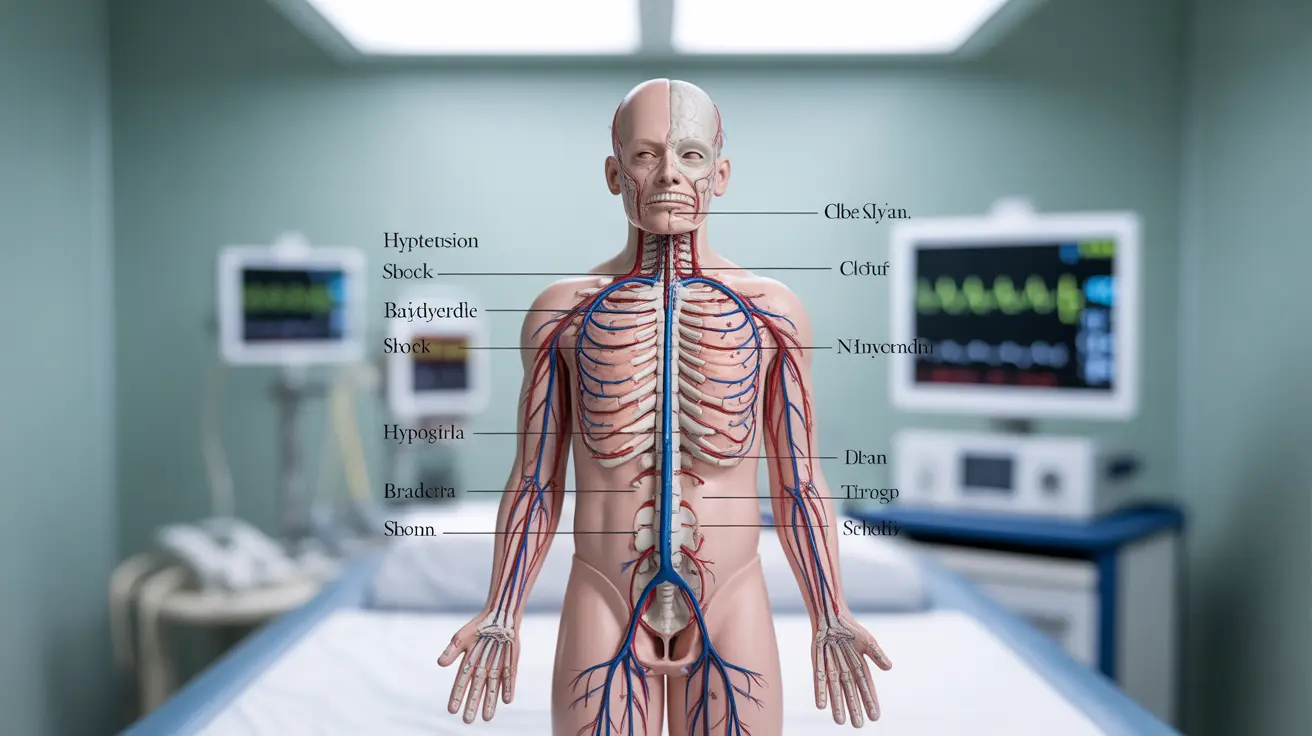Neurogenic shock is a serious medical emergency that occurs when damage to the nervous system, particularly the spinal cord, disrupts the body's normal autonomic functions. This life-threatening condition requires immediate medical attention and can significantly impact multiple body systems, leading to dangerous drops in blood pressure and other severe complications.
Understanding the symptoms, causes, and treatment options for neurogenic shock is crucial for healthcare providers and those at risk. This comprehensive guide explores the essential aspects of this condition and outlines current management strategies.
Key Symptoms and Warning Signs
Recognizing neurogenic shock symptoms early can be lifesaving. The primary indicators include:
- Severe hypotension (low blood pressure)
- Slow heart rate (bradycardia)
- Warm, flushed skin
- Decreased body temperature
- Difficulty breathing
- Mental confusion or altered consciousness
Unlike other forms of shock, neurogenic shock uniquely presents with warm, dry skin rather than cold, clammy skin. This distinction helps medical professionals differentiate it from other shock types.
Diagnosis and Initial Assessment
Healthcare providers diagnose neurogenic shock through a combination of physical examination, medical history review, and diagnostic tests. Key diagnostic procedures include:
- Blood pressure monitoring
- Heart rate assessment
- Neurological examination
- CT scans or MRI of the spine
- Blood tests to rule out other conditions
Treatment Approaches and Management
The treatment of neurogenic shock requires a comprehensive, multi-faceted approach. Primary interventions typically include:
- Immediate stabilization of blood pressure and heart rate
- Administration of intravenous fluids
- Medication therapy (vasopressors and chronotropic agents)
- Management of the underlying spinal cord injury
- Continuous monitoring of vital signs
Long-term management often involves rehabilitation and ongoing medical support to prevent complications and improve outcomes.
Risk Factors and Prevention
While not all cases of neurogenic shock can be prevented, understanding risk factors and taking appropriate precautions can help reduce the likelihood of occurrence. Key preventive measures include:
- Using proper safety equipment during high-risk activities
- Following workplace safety protocols
- Wearing appropriate protective gear during sports
- Maintaining good spinal health
- Regular medical check-ups for those with underlying conditions
Long-term Outlook and Recovery
The recovery process from neurogenic shock varies significantly among patients and depends on several factors:
- Severity of the initial injury
- Speed of medical intervention
- Overall health status
- Quality of ongoing care and rehabilitation
- Compliance with treatment protocols
Frequently Asked Questions
What are the common symptoms of neurogenic shock, and how is it diagnosed?
Neurogenic shock typically presents with low blood pressure, slow heart rate, and warm, flushed skin. Diagnosis involves physical examination, vital sign monitoring, and various imaging studies, particularly of the spine.
How is neurogenic shock treated, and what are the most effective management strategies?
Treatment focuses on stabilizing blood pressure and heart rate through IV fluids, medications, and addressing the underlying spinal cord injury. Continuous monitoring and specialized intensive care are essential components of effective management.
Can neurogenic shock be caused by conditions other than spinal cord injuries, and what are they?
While spinal cord injuries are the primary cause, neurogenic shock can also result from severe brain trauma, certain medications affecting nervous system function, and some surgical complications affecting the autonomic nervous system.
What are the potential long-term complications of neurogenic shock if left untreated or poorly managed?
Untreated neurogenic shock can lead to organ damage, cognitive impairment, permanent neurological deficits, and in severe cases, death. Proper and timely treatment is crucial to prevent these complications.
How can someone prevent or reduce the risk of developing neurogenic shock after a spinal cord injury?
Prevention focuses on immediate immobilization after injury, rapid medical response, and careful transport to appropriate medical facilities. Following safety protocols and wearing protective equipment during high-risk activities can help prevent initial injuries that lead to neurogenic shock.




